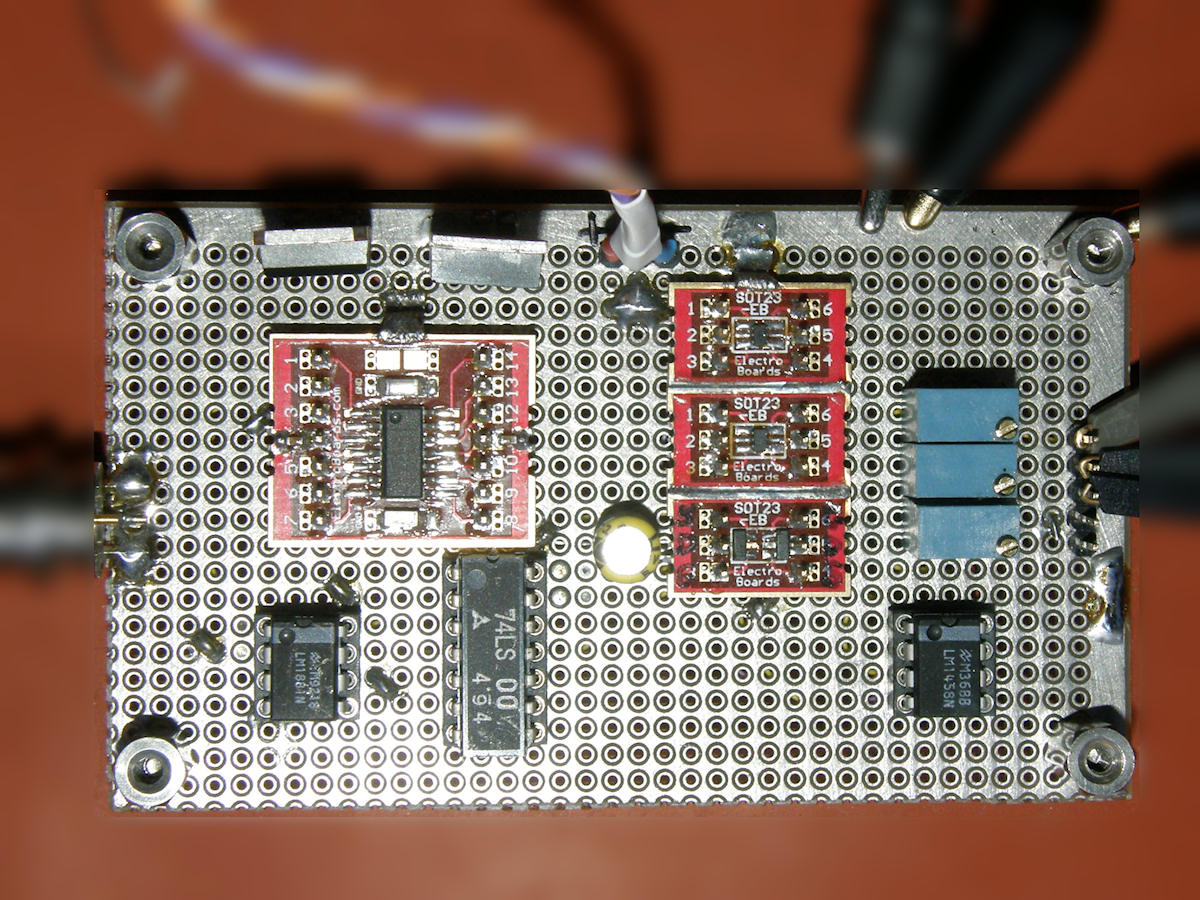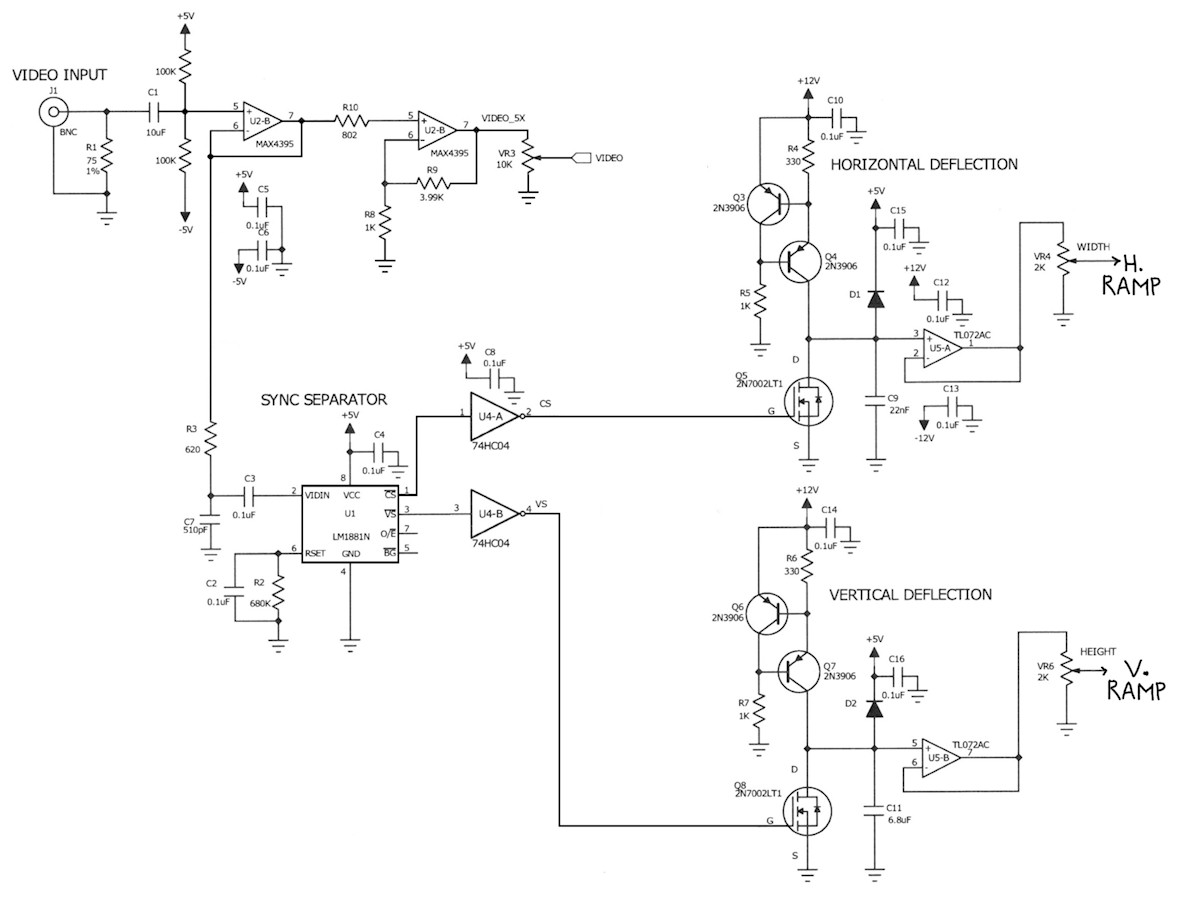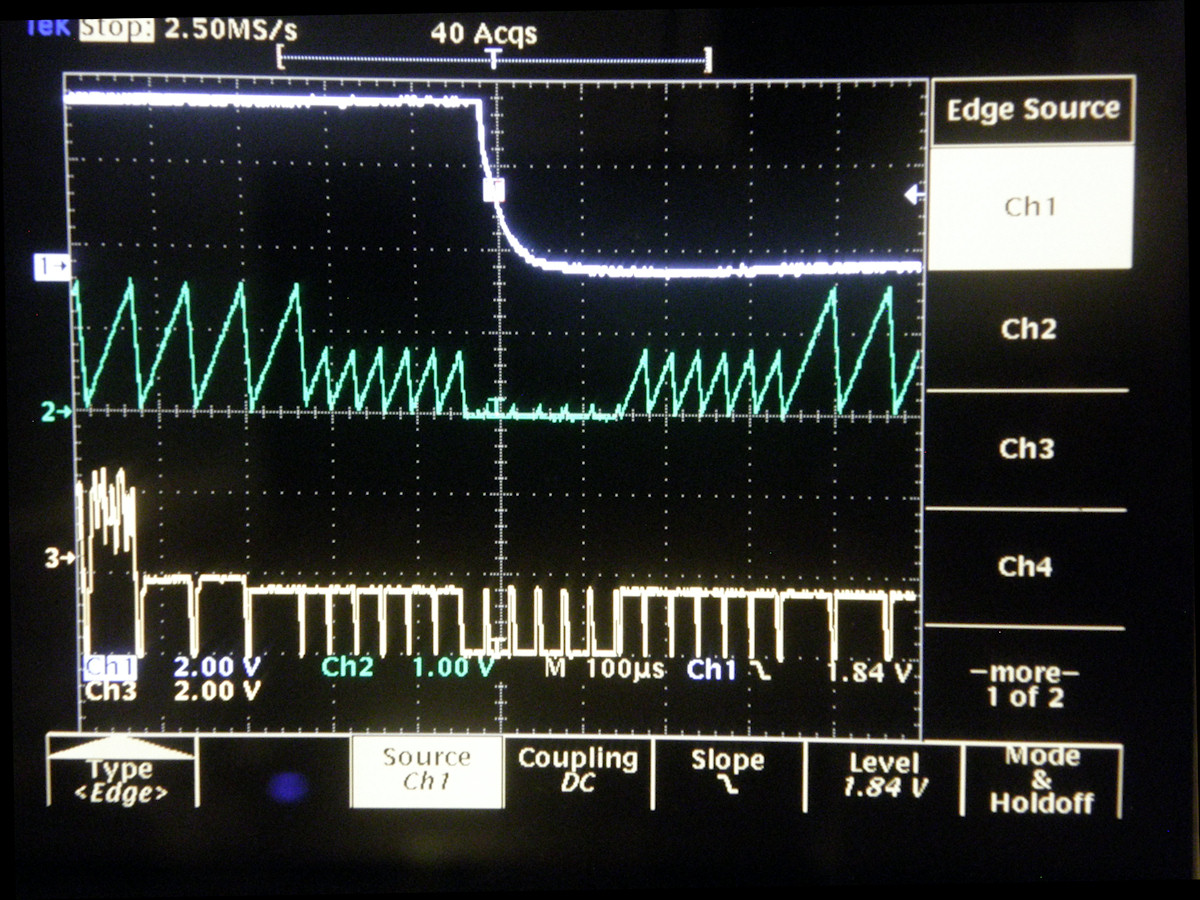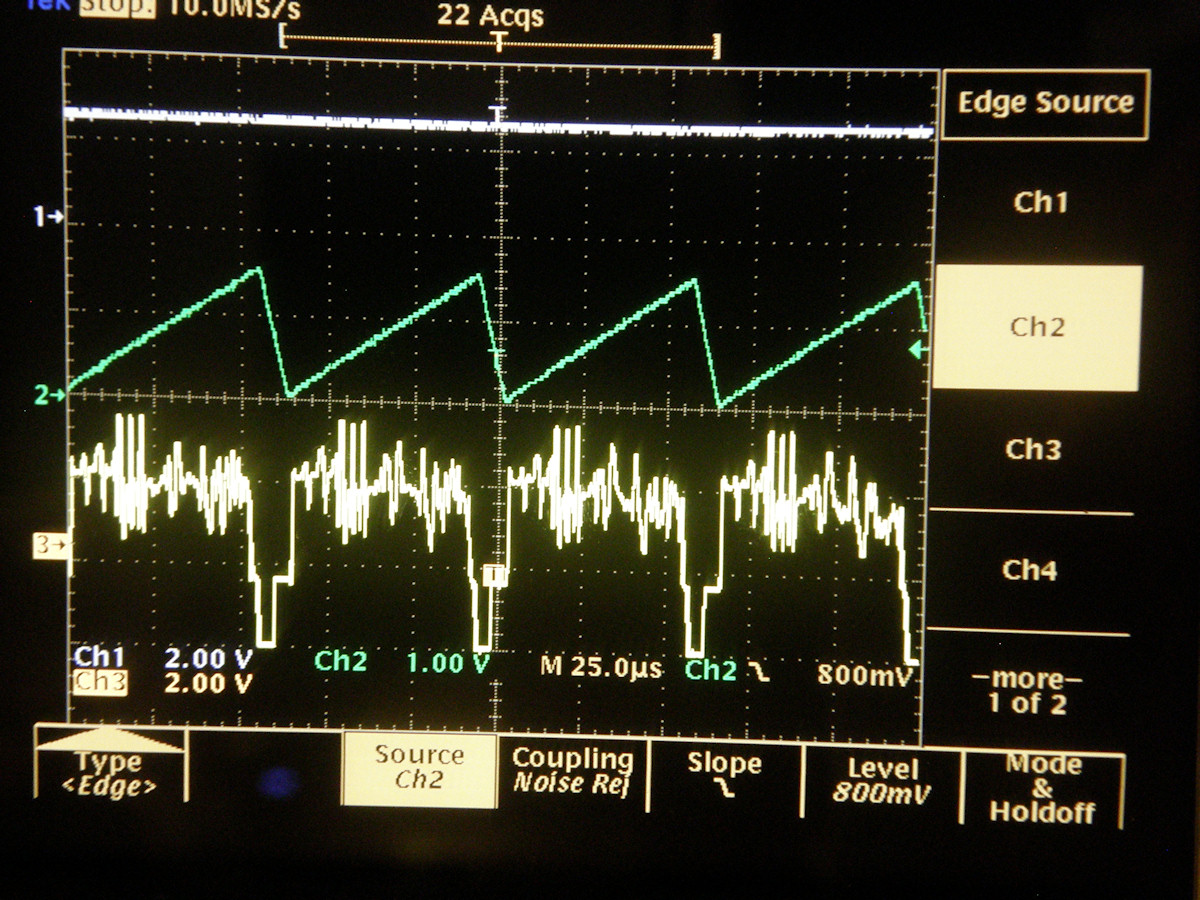LabGuy's World: Tiny TV Board Project

Tiny TV - A sweep generator / video amplifier for XYZ displays PROJECT GOAL: The Tiny TV board is to dismantle a composite video signal into a buffered and amplified version of itself plus extracts sync to produce synchronyzed horizontal and vertical scan ramp voltages. This board is expressly designed to drive what are commonly known as oscilloscopes and X,Y,Z displays. I built this board in July of 2011. This is a completed project. 
Tiny TV - Full Schematic Diagram - paintshop cut and paste version Composite video enters the circuit at the upper left through J1. It is properly terminated into a 75 ohm resistive load. The sigal is next AC coupled to the input of the first video op amp, a voltage follower buffer. The coupled video input is held at approximately DC zero volts by way of the two 100K resistors stretched between plus and minus five volts. The buffered output of the op amp drives the output op amp and the input of the sync separator. The second video op amp both raises the signal level X5 and drives the pot providing a variable output level. The sync separator is my favorite chip. The LM1881N by National Semiconductor (now Texas Instruments) The video input is applied to the 1881 throug a simple filter consisting of a 680 ohm resistor and a 510pF capacitor. This filters off some of the chroma signal that extends into the sync region in NTSC color composite video. The filtered video is AC coupled to pin 2 of the 1881. R2 and C2 are part of the chip internal bias. The 1881 extracts four useful signals from composite video. These are composite sync, vertical sync, a field identifier square wave and finally burst gate. Tiny TV uses composite sync to drive the horizontal scan generator and the vertical sync drives vertical scan, of course. Both scan generators are identical with the exception of the value of one capacitor. This description is valid for both circuits. The transistors labeled Q3 and Q4 form a constant current source. The current is established by the value of R4 and the .65 volt base emitter drop of Q3. 0.65 volts divided by 330 ohms equals 1.97mA or 2mA to make life easy. Next are Q5 and C9. When horizontal sync is active, Q5 is a short circuit across C9. It discharges to 0 volts. When sync is inactive, Q5 turns off and C9 begins to charge at a constant rate due to the action of the 2mA current source of Q3/Q4. In fact, the charge is perfectly linear! As long as there is sync, the ramps will conitnue to be generated. 
Tiny TV - Vertical ramp retrace time and with horizontal ramp short lining This system is not like a typical scan circuit that self oscillates. This one requires continuous pulses or it rises to a maximum value and stops there. I plan to address this in the immediate future with the addion of two LM555 timer ICs configured to respond to sync pulses. A second shortcoming of this design is a condition I call short lining. This is visibe in the green trace, horizontal ramp, during the veritcal sync interval when the eqalizing and serration pulses are active. There is a reasonably simple fix for this as well. Two one shots (adjustable timer circuits) in series can be easily configured to block pulses at twice horizontal rate. This filtered sync will then produce continuous horizontal ramps through the vertical interval. However, in the absence of cotinuous filtered sync, the diodes, D1 & D2, clamp the capacitor's maximum voltage at about 5.6 volts. (This is completely arbitrary. I just have a thing for five volt signals.) The op amp forms a simple voltage follower buffer between the capacitor and the level control pot. The short lining effect is harmless when driving electrostatic scan CRTs. But, I am willing to bet it will play hob with magnetic scan. It's essentially changing the scan rate to double speed and back, on the fly. Inductive deflection coils will most likely get real stupid if driven that way. (A more scientific description awaits the final testing of said system) The only difference between the horizontal and the vertical scan circuit is the capacitor values. Through experimentation, I found the 22nF (.022uF / 22,000pF) made a ramp that rose from zero to 5 volts in 63uS. Perfect! So, if I keep the same curent, what capacitor value would I need to generate a ramp at the rate of 60Hz (16.67mS)? It's logical that if horizontal scan is 262.5 times faster than vertical scan, then the new capacitor will be 262.5 times 22nF! The formula: 262.5 X 22nF = 5.775uF. Not bad!!! Since 5.7 is not a standard value, the nearest value I had on hand was 6.8 uF. This works great and generates a nice staight ramp at vertical rate. 

Horizontal retrace and scan time scope shots In the photos above, the green trace is the horizontal scan ramp. Note how the ramp rises in a straight line during the active part of the TV line and falls during the horizontal blanking interval. The classic scan and retrace cycle. 

Vertical retrace and scan time scope shots In the photos above, the white trace is the vertical scan ramp. This ramp is identical in form to the horizontal ramp except in duration. Vertical scan (in NTSC) runs 262.5 times slower than the horizontal scan. Vertical ramps repeat at a rate of 59.94 per second and there are 15,634.24... horizontal ramps per second in NTSC. In the old black and white standard called RS-170, it was 60Hz and 15,750Hz. These changed slightly in the ealrliest 1950s to accommodate the NTSC (RS-170A) color signal. Here is a recent video I made of my Tektronix 606B X,Y,Z CRT display. It is being driven by the Tiny TV board. Enjoy! So, now you have a general understanding of the Tiny TV board. In a future installment, I will address the self oscillation and short lining issues. This promises to be a fun and educational series of projects destined for building both a color flying spot scanner and a CRT type monoscope of my own design. This concludes the Tiny TV Board Project. [HOME] [ELECTRONICS PROJECTS] Created: October 26,2014 Last updated: October 26, 2014 |